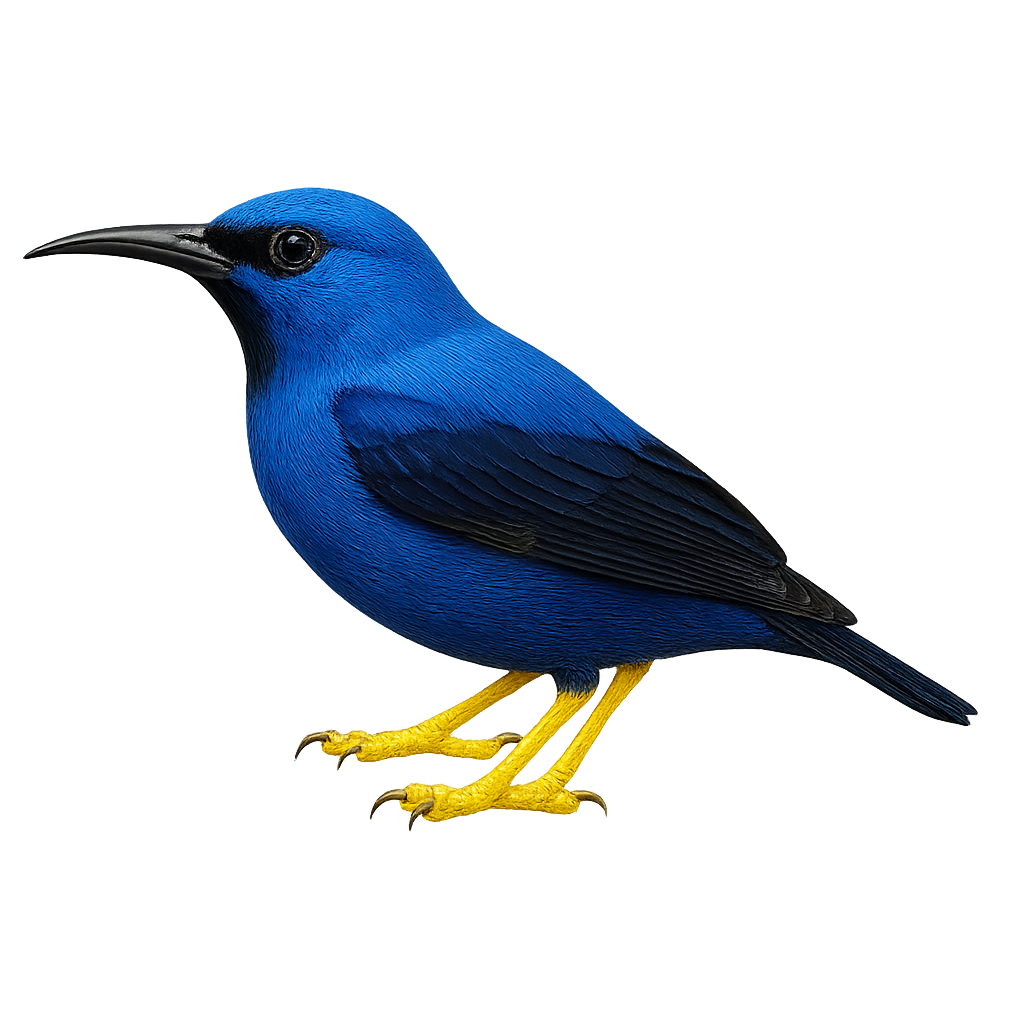Your wildlife photography guide.
Explore the shining honeycreeper in detail, study its behavior, prepare your shots.
Where to observe and photograph the shining honeycreeper in the wild
Learn where and when to spot the shining honeycreeper in the wild, how to identify the species based on distinctive features, and what natural environments it inhabits. The WildlifePhotographer app offers tailored photography tips that reflect the shining honeycreeper’s behavior, helping you capture better wildlife images. Explore the full species profile for key information including description, habitat, active periods, and approach techniques.
Shining Honeycreeper
Scientific name: Cyanerpes lucidus

IUCN Status: Least Concern
Family: THRAUPIDAE
Group: Birds
Sensitivity to human approach: Suspicious
Minimum approach distance: 5 m
Courtship display: March to May
Incubation: 12-14 jours
Hatchings: March to June
Habitat:
Humid forests, forest edges
Activity period :
Primarily active during the day, with peak activity in the morning and late afternoon.
Identification and description:
The Cyanerpes lucidus, or Shining Honeycreeper, is a small tropical bird with vibrant colors, primarily blue with black wings and a slender, curved beak. This nectarivore primarily feeds on nectar but also consumes fruits and insects. It is found in the humid forests and forest edges of Central America, from southern Mexico to Panama. Males display a striking blue plumage, while females are more subdued in green. Their behavior is generally active and social, often seen in small groups. They play a crucial role in pollinating tropical plants.
Recommended lens:
400 mm – adjust based on distance, desired framing (portrait or habitat), and approach conditions.
Photography tips:
To photograph the Shining Honeycreeper, prioritize early morning hours when natural light is soft. Use a telephoto lens of at least 400mm to capture the details of its vibrant plumage without disturbing the bird. Be patient and discreet, as although suspicious, this bird may approach if you remain still. Consider using a tripod to stabilize your camera for sharp images. Take advantage of moments when it feeds on nectar to capture dynamic and colorful scenes.
The WildlifePhotographer App is coming soon!
Be the first to explore the best nature spots, track rutting seasons, log your observations, and observe more wildlife.
Already 1 432 wildlife lovers subscribed worldwide

